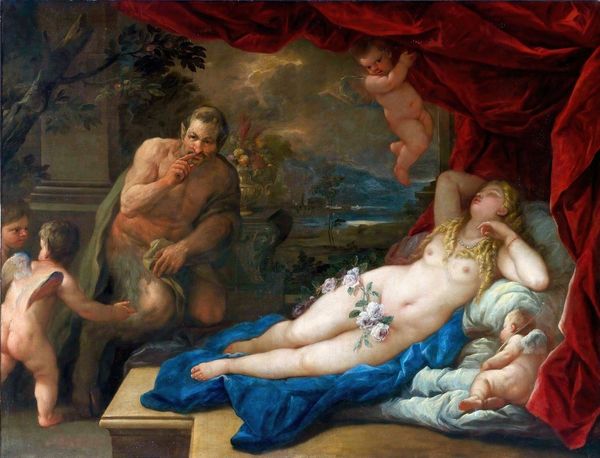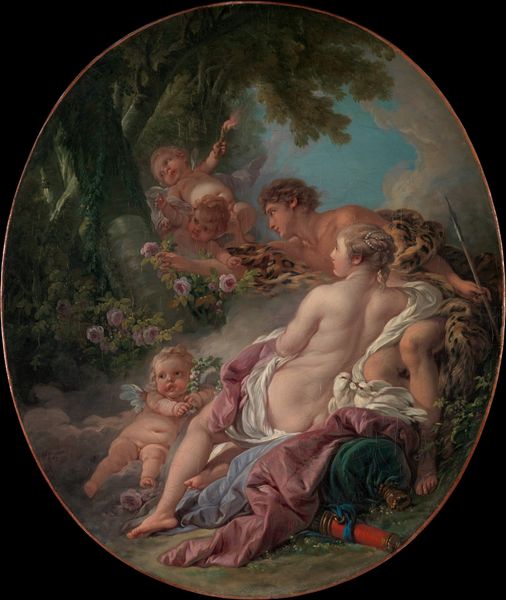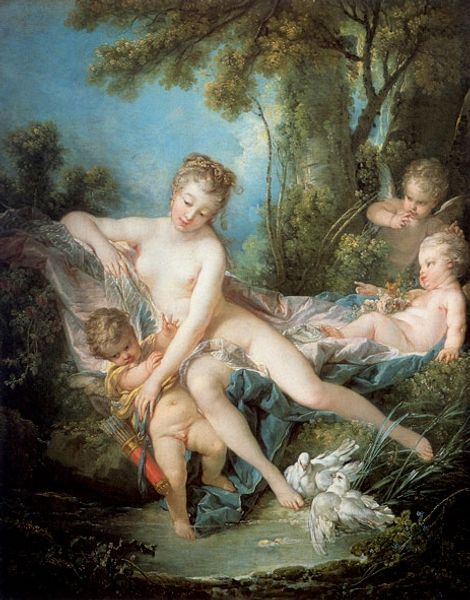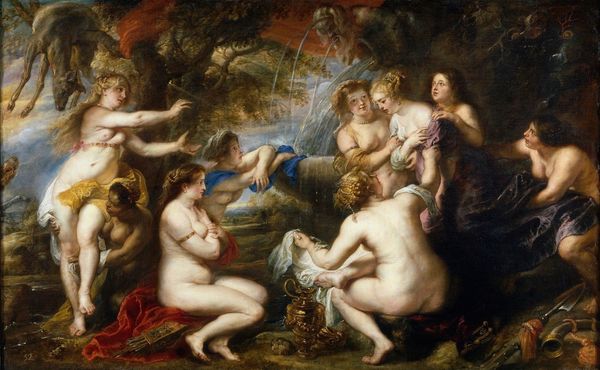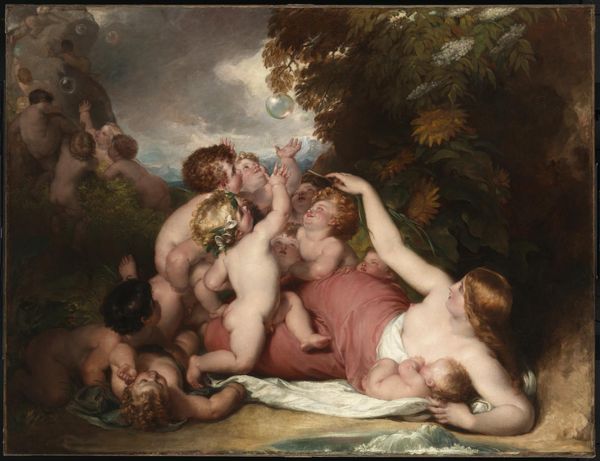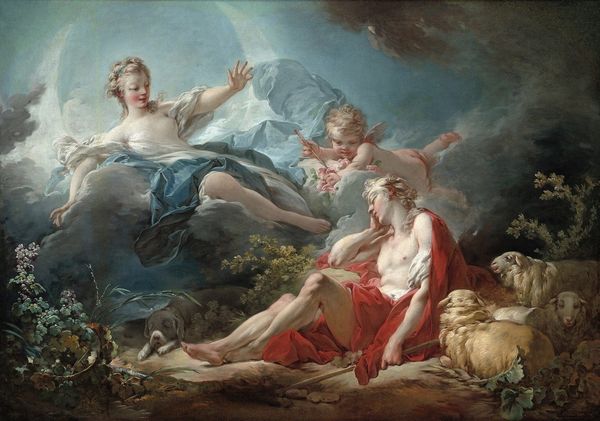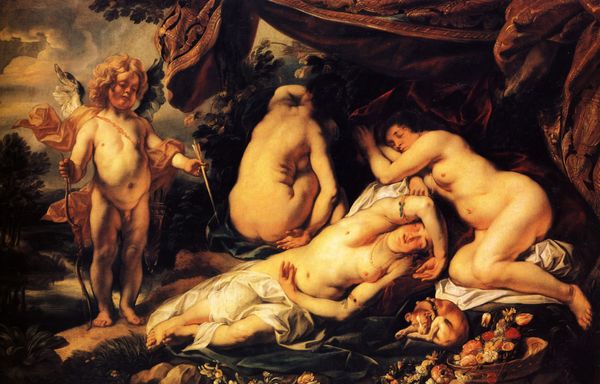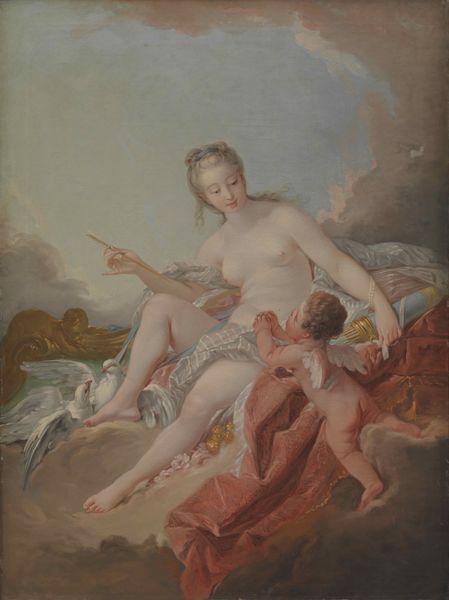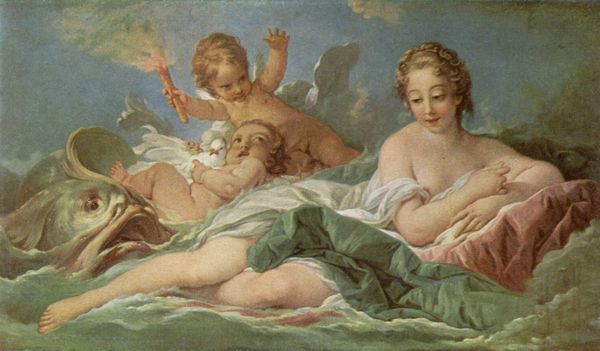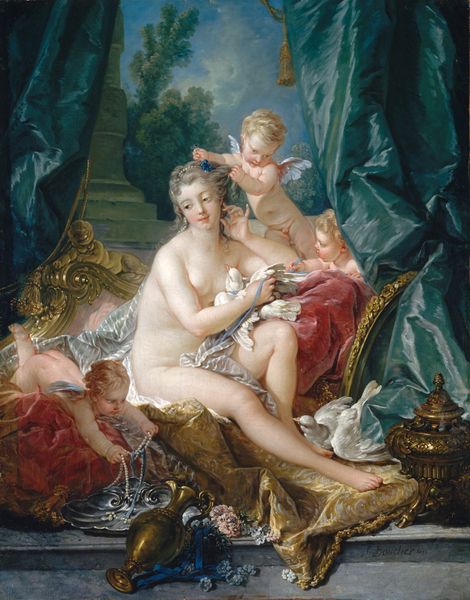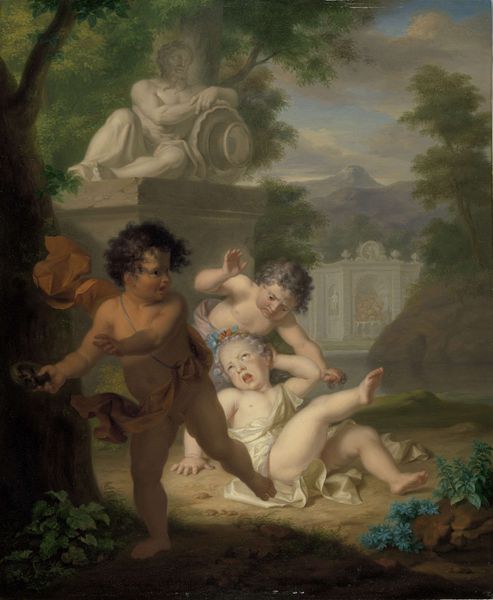
painting, oil-paint
#
portrait
#
allegory
#
painting
#
oil-paint
#
figuration
#
oil painting
#
romanticism
#
history-painting
#
portrait art
Dimensions: 27 × 21.5 cm (10 5/8 × 8 15/32 in.)
Copyright: Public Domain
Editor: This is Merry-Joseph Blondel’s *Venus Healing Aeneas*, painted around 1820. There’s something really striking about Venus's presence, almost a luminous contrast to the darker landscape and Aeneas's prone figure. How do you interpret this work? Curator: I see this as more than a straightforward mythological scene; it's a powerful commentary on gender, power, and healing within a patriarchal society. Blondel positions Venus as the active healer, directly challenging traditional portrayals of women as passive or purely aesthetic figures. What does it mean for a female deity to intervene in a narrative so rooted in male heroism? Editor: So, it’s about Blondel giving Venus agency within this familiar story? Curator: Exactly! And consider the racial dynamics subtly at play. While the figures are idealized, how might Blondel's portrayal perpetuate or challenge the prevailing beauty standards of his time? How does this romanticized view of antiquity align with contemporary discourses on colonialism and cultural appropriation? Editor: That's a lot to consider. I was initially drawn to the artistic skill, but it’s fascinating to think about the painting in terms of power structures. Curator: Right, we cannot separate art from its context, be it historical, political, or social. It’s more than an aesthetic experience, it's a conversation with history. Editor: I see what you mean. Thanks, that’s given me a lot to think about in how I approach art history. Curator: Absolutely. It’s by asking these difficult questions that art becomes truly meaningful.
Comments
No comments
Be the first to comment and join the conversation on the ultimate creative platform.

